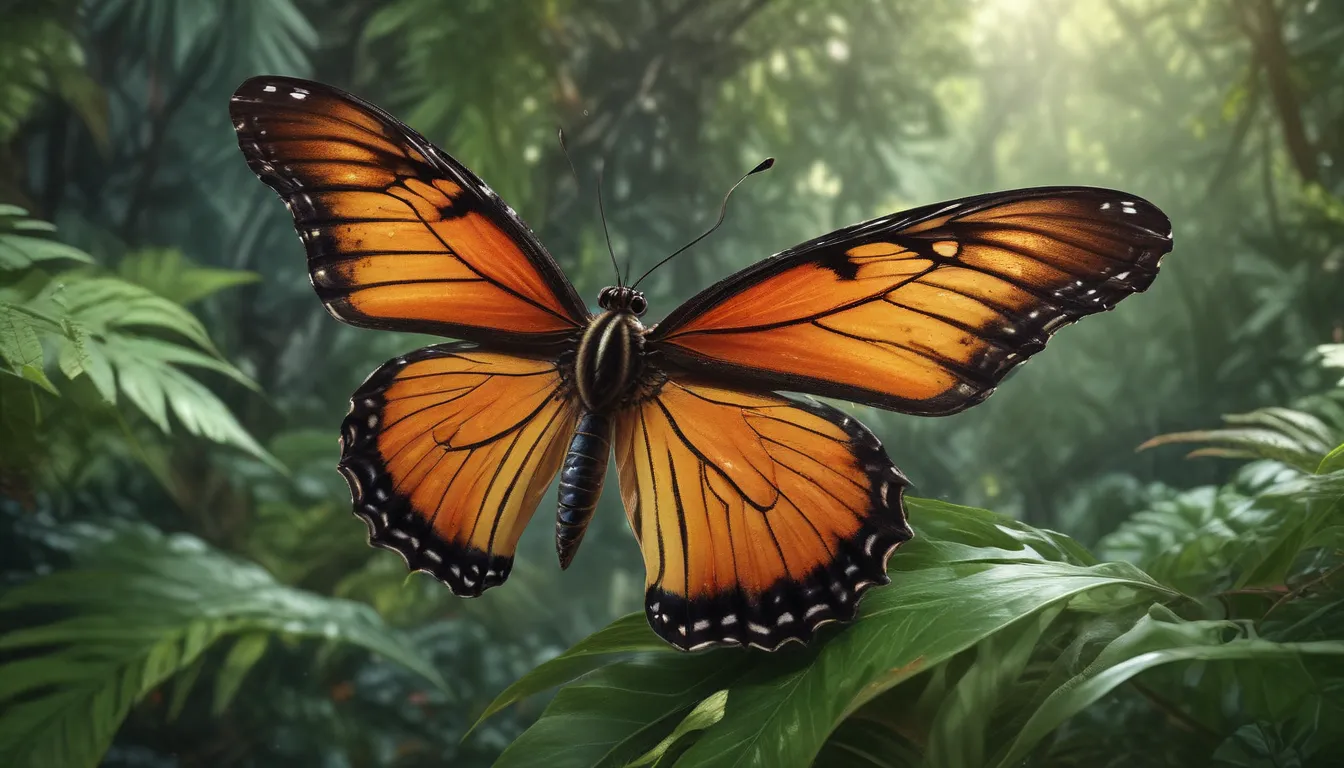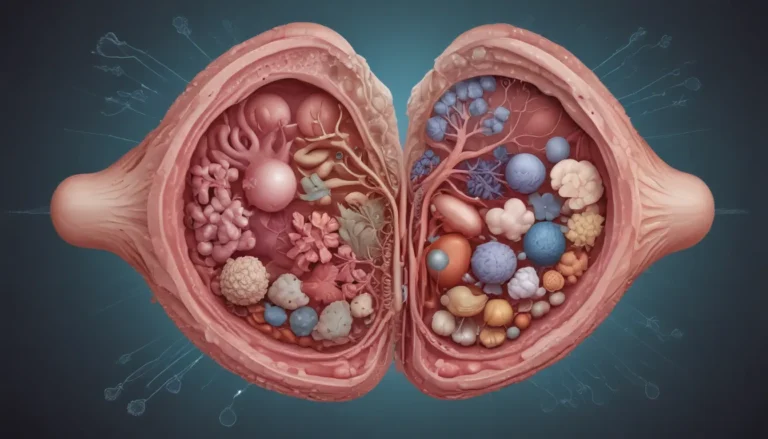A Note About Images: The images used in our articles are for illustration purposes only and may not exactly match the content. They are meant to engage readers, but the text should be relied upon for accurate information.
Batesian mimicry is a mesmerizing natural phenomenon where certain species adopt the appearance of others to outsmart predators and secure their survival. First identified by the eminent British naturalist Henry Walter Bates in the 19th century, this form of mimicry has been a subject of fascination for researchers ever since.
Exploring the Realm of Batesian Mimicry
Let’s embark on a journey into the captivating world of Batesian mimicry as we unravel 18 enigmatic facts that shine a light on this extraordinary deception strategy in the animal kingdom. From the remarkable adaptations of mimics to the evolutionary arms race between predators and their mimics, we will delve deep into the complexities and mysteries of this intriguing biological phenomenon.
So, buckle up and get ready to unveil the secrets behind Batesian mimicry as we venture into the world of mimicry and deception in nature.
Key Takeaways:
- Batesian mimicry is a clever survival strategy where harmless species imitate dangerous ones to fool predators. It’s like wearing a disguise to stay safe in the animal world!
- Mimics and models in Batesian mimicry share similar warning signals, like bright colors, to trick predators. It’s like using the same secret code to confuse the bad guys!
Batesian Mimicry: A Closer Look
Batesian mimicry is a mesmerizing phenomenon observed in nature, where a harmless species mimics the appearance of a harmful or toxic species to shield itself from predators. This ingenious strategy allows the mimic to deceive potential threats and increase its chances of survival in the wild.
The Legacy of Henry Walter Bates
The term “Batesian mimicry” pays homage to Henry Walter Bates, an illustrious English naturalist who extensively studied and documented this form of mimicry during his explorations in the Amazon rainforest. His groundbreaking work laid the foundation for our understanding of this intriguing survival tactic.
Insects: Masters of Batesian Mimicry
Insects reign supreme when it comes to showcasing Batesian mimicry in action. An array of butterfly species, moths, beetles, and other insects employ mimicry as a means of evading predators and thriving in their environments.
Mimicking Danger: The Key to Protection
One of the primary advantages of Batesian mimicry is that the harmless mimic gains protection by resembling a more threatening or unappetizing species. This mimicry creates confusion among predators and serves as a shield against potential attacks.
Shared Warning Signals: Mimics and Models
In Batesian mimicry, both models (harmful species) and mimics share similar warning signals, such as bright colors or distinctive patterns, to convey their unpalatability to predators. This mimicry helps mimics in deceiving attackers and avoiding predation.
A Game of Deception: Evolving Batesian Mimicry
Over time, Batesian mimicry can evolve through natural selection. Mimics that closely resemble their models have a higher likelihood of survival and reproduction, leading to the refinement of mimicry patterns over generations.
The Viceroy Butterfly and the Monarch Butterfly: A Classic Example
The Viceroy butterfly, closely resembling the toxic Monarch butterfly, serves as a classic demonstration of Batesian mimicry. Predators often struggle to differentiate between these two species, providing protection to the harmless Viceroy butterfly.
Beyond Visual Trickery: Batesian Mimicry in Action
While visual mimicry is prevalent, Batesian mimicry can extend to other senses as well. Mimics may imitate the sounds or chemical cues of their models to enhance their deception and protective mechanisms.
Adapting to Survival: Influence of Temperature
Temperature can influence the effectiveness of Batesian mimicry. Mimics in environments with temperature variations may exhibit different mimicry patterns to align with the local models and enhance their survival strategies.
Coevolutionary Dynamics: A Persistent Arms Race
The ongoing evolutionary battle between models and mimics can drive coevolutionary dynamics. As models develop new defense tactics, mimics must adapt to maintain their deception and survival, creating a perpetual arms race in nature.
Genetic Factors: Shaping Batesian Mimicry
Genetic traits and inheritance play a pivotal role in the development and expression of Batesian mimicry. Successful mimicry patterns can be passed down from one generation to the next, contributing to the persistence of this survival strategy.
Population Dynamics: Balancing Models and Mimics
The abundance of models and mimics within a population can impact the efficacy of Batesian mimicry. Higher ratios of mimics and lower numbers of models may lead to reduced effectiveness in deterring predators, highlighting the delicate balance of this evolutionary tactic.
Versatility Across Ecosystems: Habitat Diversity in Batesian Mimicry
Batesian mimicry is not confined to specific habitats and can be observed in both terrestrial and aquatic ecosystems. This versatility underscores the adaptability of this evolutionary strategy across diverse environments.
Imperfect Deception: Limitations of Batesian Mimicry
While Batesian mimicry is an effective survival strategy, it is not foolproof. Some predators can discern between models and mimics, resulting in occasional failed attempts at deception and highlighting the perpetual challenges of survival in nature.
Unraveling the Mysteries: The Saga of Batesian Mimicry Continues
Batesian mimicry remains a captivating subject of scientific inquiry and exploration. Scientists are continually unraveling the complexities of this phenomenon to gain insights into evolutionary processes and the remarkable adaptations displayed by organisms in the natural world.
Conclusion
In conclusion, Batesian mimicry stands as a testament to the ingenuity of nature and the diverse strategies organisms employ to ensure their survival. From mimicry patterns to evolutionary dynamics, the world of Batesian mimicry offers a treasure trove of intriguing insights into the intricate workings of the animal kingdom.
As researchers venture deeper into the realm of Batesian mimicry, they uncover new revelations that challenge our perceptions of evolutionary biology and adaptation. Through collaborative efforts and ongoing research, we can unlock the secrets of this captivating phenomenon and gain valuable knowledge about the wonders of mimicry in nature.
FAQs
-
What is Batesian mimicry?
Batesian mimicry is a survival strategy where a harmless species imitates a toxic or unpalatable species to deceive predators and enhance its chances of survival. -
How does Batesian mimicry benefit the mimic?
By mimicking a harmful species, the mimic gains protection from predators that recognize the model as unpalatable, increasing its chances of survival. -
Are there different types of Batesian mimicry?
Yes, different types of mimicry exist, including Müllerian mimicry, where toxic species mimic each other’s warning signals to reinforce their unpalatability. -
How do predators differentiate between the mimic and the model?
Predators rely on visual cues to identify potential prey, but there can still be instances where they mistake a mimic for the model, leading to evolutionary pressures for better mimicry. -
Where can Batesian mimicry be observed in nature?
Batesian mimicry can be found in various ecosystems, from tropical rainforests to coral reefs, showcasing the adaptability and widespread occurrence of this survival strategy.
Embark on a journey through the enthralling world of evolutionary biology and discover the captivating intricacies of Batesian mimicry. Unveil the astonishing adaptations of organisms as they navigate the complex dance of deception and survival in the natural world. Join us in exploring the wonders of mimicry and evolutionary strategies that continue to inspire and fascinate researchers worldwide.
Thank you for delving into the fascinating realm of Batesian mimicry with us. Remember to stay curious and keep exploring the marvels of nature that enrich our understanding of the world around us.





